
Ioannis spoke to me after his work in the field on Monday and on Tuesday to explain the process.
Most people have heard of radiocarbon dating – a method for finding out how long since something organic (human, animal or plant, such as bones or wood) stopped living. This is done by finding out how much radioactivity of Carbon 14 remains in the organic material, which indicates how long since the material stopped exchanging carbon dioxide with the atmosphere, or how long since it died.
We are using a different a different method of dating at Zagora for a different purpose. Luminescence dating is a method to determine how long since something was exposed to sunlight. In the case of our enquiry at Zagora, we want to know when a wall was built.
There are a great many walls at Zagora. Our archaeologists can generally tell an old wall from a recently built wall even if the building method, eg, stacking stones, is the same.
But for the purposes of the study at Zagora, they would like to be as certain and precise as possible about the date of the built structures there.
This post will discuss the method of luminescence dating and the measurement of gamma (and cosmic) radiation. The latter is needed to determine the age in the interdisciplinary field of Archaeometry – which is measurements by technological means of archaeological finds (artefacts and monuments).
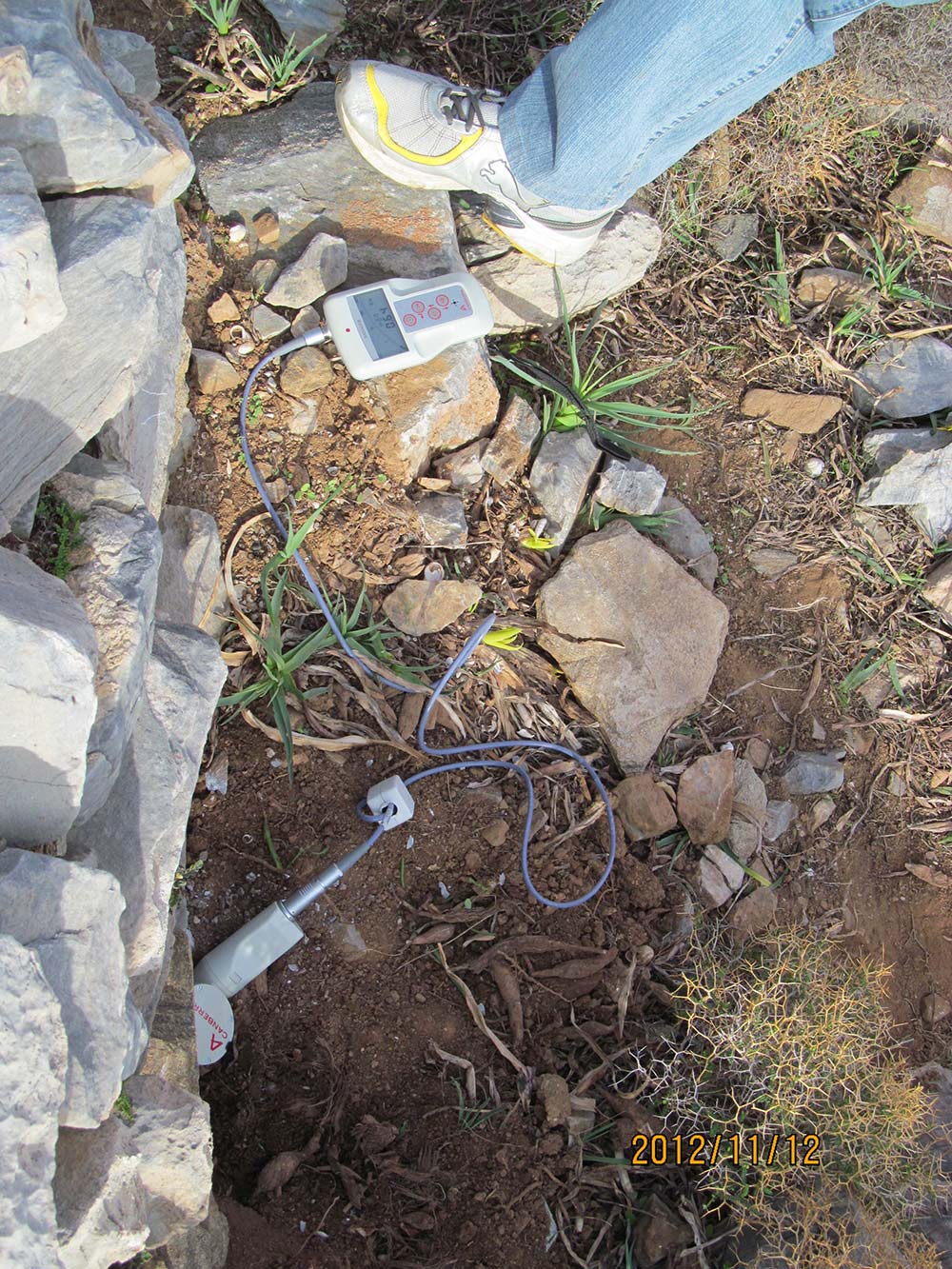
The surface luminescence dating method
Luminescence dating is a method to determine how much radioactivity is accumulated (or trapped) in the crystals of various rocks from the context of archaeological material.
In our case, the ‘context of archaeological material’ is the built wall including surrounding sediment, and the luminescence dating is applied to little detached pieces of rock slab from within that wall that had been exposed to sunlight before being built into the wall, and not exposed to sunlight since. Thermoluminescence dating will tell us how much time has elapsed since the inner surface of a piece of rock from within the wall was last exposed to sunlight or, in other words, how old the wall is.
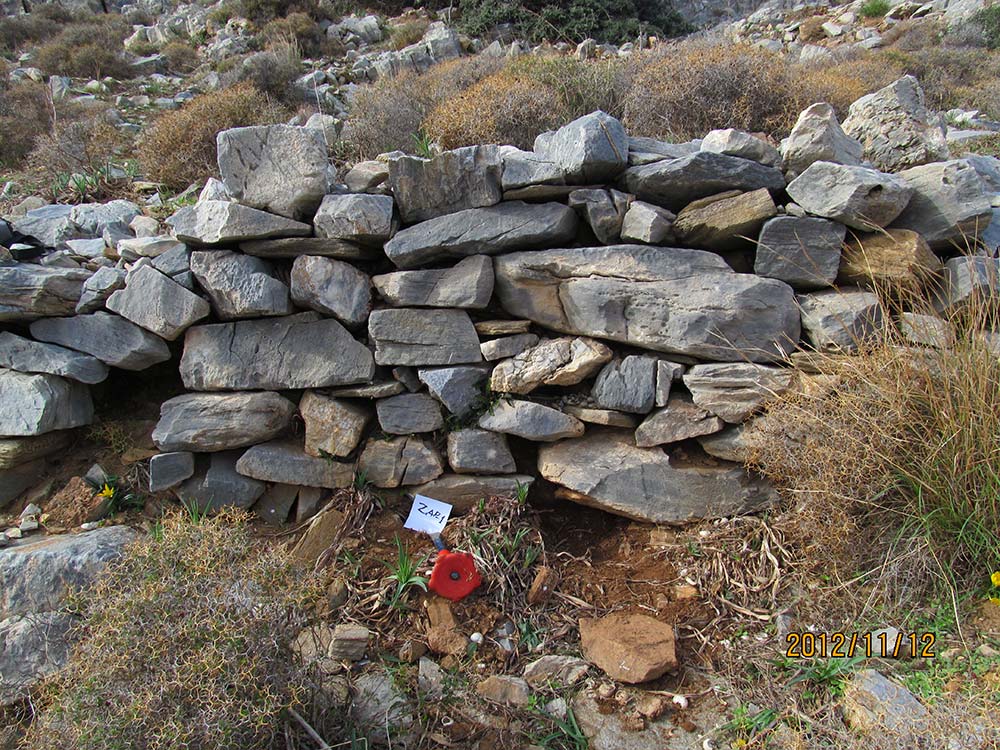
The amount of radiation absorbed by stone surfaces accumulates over time from the moment these surfaces are covered by other materials, eg stones, and no longer exposed to sunlight. This is the total dose the sample has experienced. This quantity is divided by the dose coming from same environment (ie their context) over one year. The result is the age of the material being measured, that is: dose, over dose per year, equals years! Or:
So if you can measure the amount of absorbed radiation on the surface of the rock (eg a slab or floor sediment) you can tell how long that rock or floor soil has not been exposed to sunlight, which gives you the time the wall was constructed or since the building was abandoned and the floor was covered by a collapsed roof.
Rock samples from the wall at Zagora
Ioannis took three small rock samples from the wall. He selected his samples from rocks that were low to the ground because these are most likely to have been in place and not moved since the wall was first built. Rocks higher up the wall are more likely to have been disturbed, so more likely to have been exposed to sunlight, in the time since the first construction of the wall.
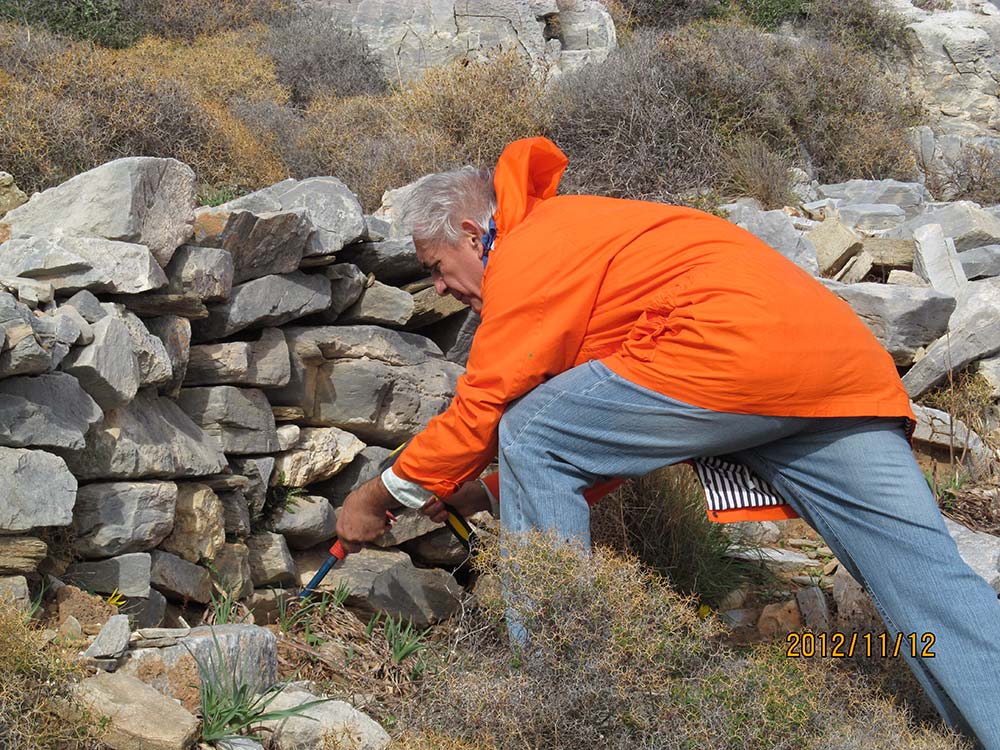
He took his samples from between rocks where little or no sunlight has been able to penetrate since the wall was built – so, selecting from where there was the smallest possible space between two rocks or was in firm contact with the soil ground.
Of course he had to select from the hidden surface of the rock in each case (rather than from the outer surface of the rock seen in the picture) because the surface had to have been exposed to sunlight before it was built into the wall, presumably in antiquity.
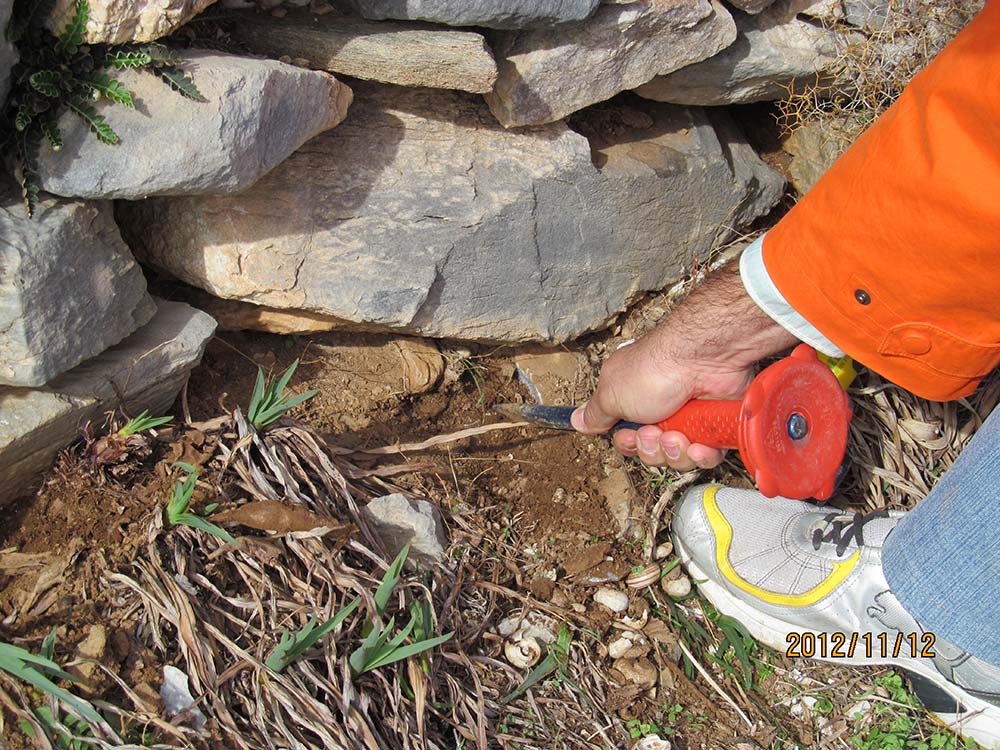
When he removed each sample, he immediately wrapped it in a black plastic bag to avoid exposure to sunlight.
These samples of rock will be processed in a laboratory to assess how long ago this rock was placed in or on the ground to make the wall.
Portable geiger meter testing at Zagora
In order to calculate the dose of gamma (including cosmic) radiation that rocks at the points of the sample sites would have been exposed to over a year, Ioannis used a portable, well calibrated Geiger meter to measure and record the gamma ray dose rate at each point where he took a rock sample.

The geiger meter has a probe which detects and records gamma radiation – which derives from the environmental natural radioactivity (isotopes of uranium, thorium, and potassium 40) of the stone and the sediment (or soil).
Gamma radiation can be detected by the device from a spherical area with a radius of about 30 cm from the point at which the measurement is taken.
This measurement is essential to determine the luminescence age equation, which is: the total accumulated radiation dose in each sample divided by the annual dose rate of the radioactivity coming from natural isotopes inside and around each sample.

Sample for laboratory testing
The analysis at the Laboratory of Archaeometry at the University of the Aegean at Rhodes will be a sample preparation under darkroom conditions (like a photographic darkroom) which involves cleaning the surface with diluted acids and grinding the surface of each sample gently to get powder at a depth of no more than 1 mm.
This powder is then selected according to the grain size which identifies whether it is quartz or feldspar or calcite. Then these grains are irradiated with artificial radiation sources and heated to a temperature of 500 degrees C in a repeated cycle of radiation and heating and reading the light that is emitted from the grains – which is called luminescence.
They will also use another technique that involves irradiation with a light of blue or green or infrared instead of heating and then repeat this cycle of irradiation with a radioactivity source and irradiation with light from a diode. Again the emitted light from the grains (optical stimulated luminescence) is recorded and this luminescence light increases with the radiation dose.
Using these two laboratory techniques and the environmental gamma (and cosmic) radiation readings taken at the site, Professor Liritzis will estimate the accumulated archaeological dose that the sample has acquired over the archaeological period (years) since it was made into the wall.
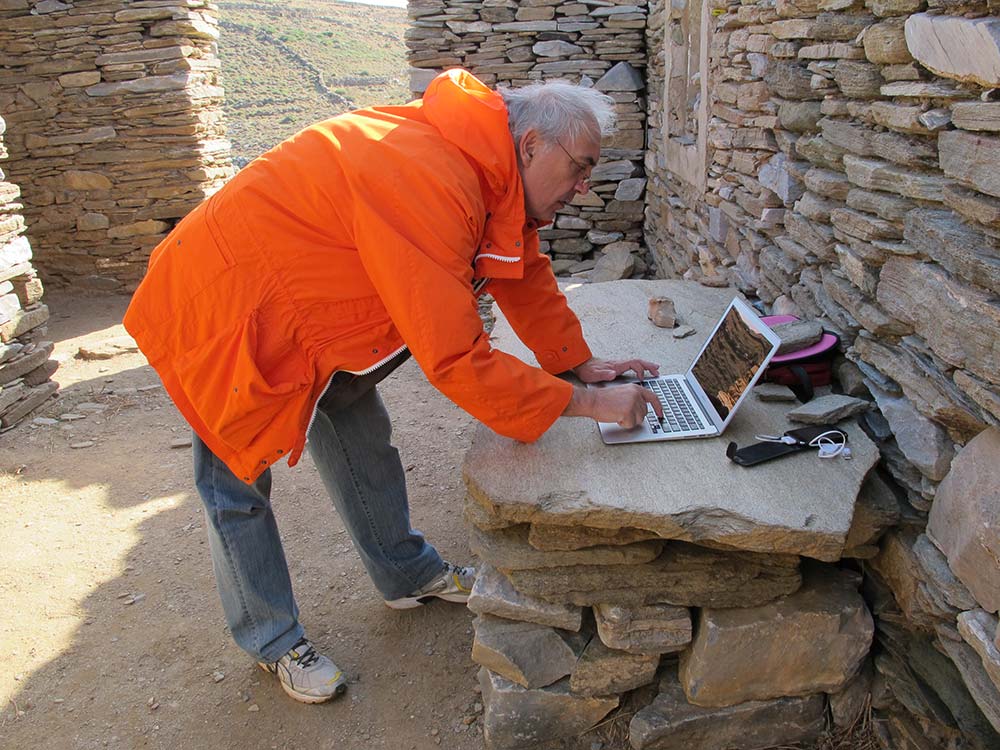
Many thanks to Professor Ioannis Liritzis (www.liritzis.gr) for his considerable contribution to this post.


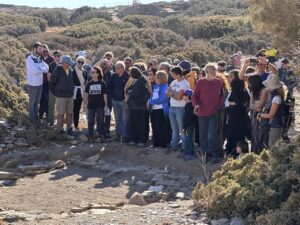
6 thoughts on “Archaeometry – surface luminescence dating of built structures”
This is a tricky subject, really quite esoteric but rendered exoteric by a wonderfully lucid exegesis. Congratulations.
Thanks – glad you thought we conveyed it clearly.
Great post Irma, fascinating stuff. I look forward to hearing the results.
Thanks, Mandy. I think that material is still being processed in the lab. I will look into what of the results I may be able to publish on this blog. With some results, we need permission or to wait until results have been published elsewhere before I am able to report them here. But I will post info when I can.
Dear Irma
You may include the results if you contact Prof Miller and discuss with her. I do not have any objections. Hope to see you again, Ioannis
Thanks, Ioannis. The Zagora directors have not yet published all the results of the past two seasons. We hope that, as material is published in academic journals, we may then post the results on the blog. Thank you for your approval to publish on the blog when it is permissible to do so. Regards, Irma